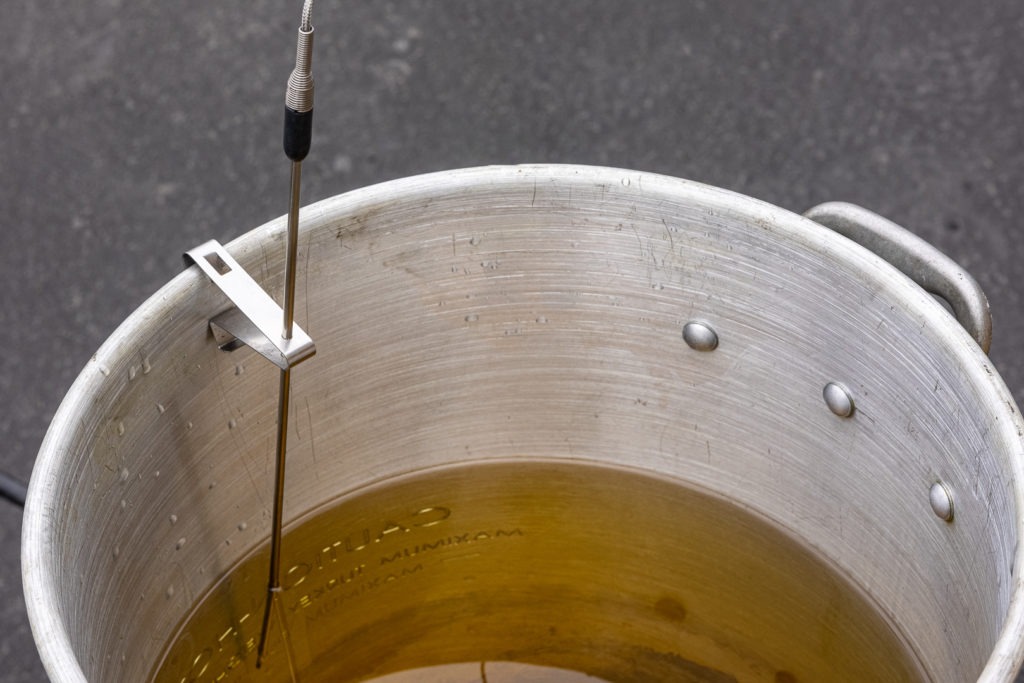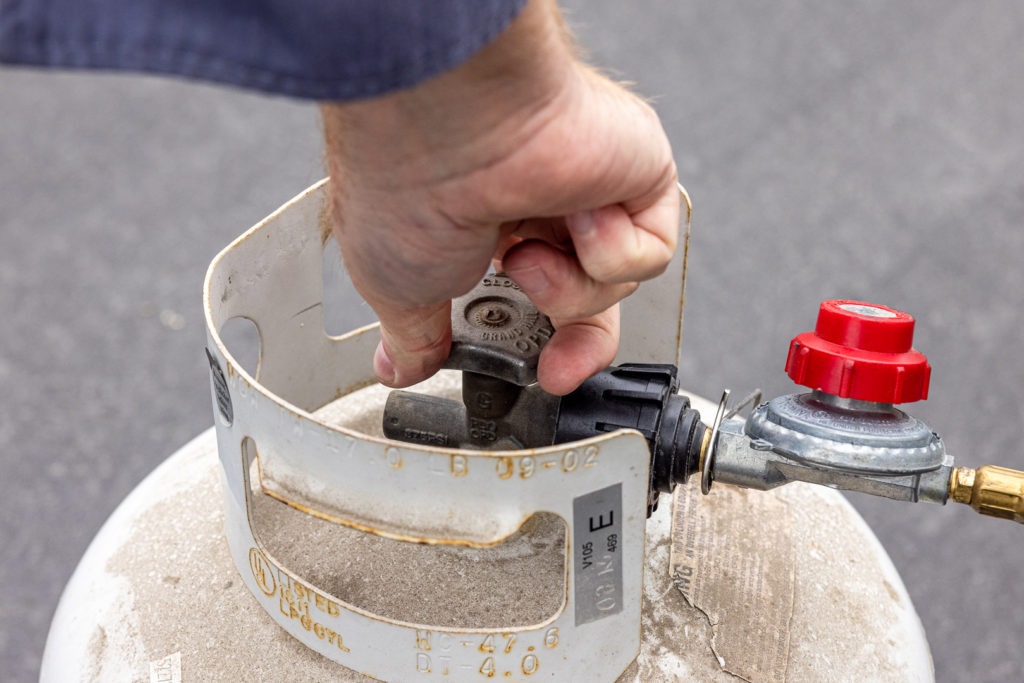We have all the advice you need to ensure both the cook’s safety and the quality of the finished product. This Thanksgiving, are you feeling daring? How about deep-frying your turkey instead of cooking it as many people claim that fried turkey is the tastiest, most flavorful, crispy-on-the-outside, and most juicy piece of poultry they have ever tasted? This project involves many temperature-critical control points.
The critical oil temperature and the turkey meat temperature will be measured simultaneously by means of a 12′′ Pro-Series® High Temp Probe and a ThermoWorks® Smoke X2TM 2-Channel Alarm Thermometer.
Forget the dry, overcooked turkey of yore. This Thanksgiving, embrace the juicy, flavorful, and crispy-skinned wonder that is deep-fried turkey. It’s a game-changer, and I’m here to guide you through the process, from prepping the bird to achieving that golden-brown perfection.
Why Deep-Fry Your Turkey?
Let’s be honest, traditional roasted turkey can be a bit of a gamble. It often ends up dry, bland, and frankly, disappointing. Deep-frying, however, unlocks a whole new world of flavor and texture. Here’s why you should ditch the oven and embrace the fryer:
- Flavor Explosion: The deep-frying process locks in moisture, resulting in incredibly juicy white meat and flavorful dark meat. The crispy skin adds another layer of deliciousness, making every bite a revelation.
- Time-Saving Hero: Deep-frying is significantly faster than roasting, freeing up valuable oven space for your sides and desserts. No more stressing about coordinating cooking times!
- Versatility Unleashed: Deep-frying opens up a world of possibilities. Experiment with different marinades, rubs, and spices to create a turkey that reflects your unique taste.
- The Wow Factor: Let’s be real, deep-frying a turkey is a spectacle. It’s sure to impress your guests and become a Thanksgiving tradition everyone will look forward to.
Conquering the Deep-Fry: A Step-by-Step Guide
Don’t let the thought of deep-frying intimidate you With the right tools and instructions, it’s a surprisingly straightforward process. Here’s what you’ll need:
Equipment:
- Turkey fryer: Invest in a good-quality fryer with a sturdy stand, propane burner, and a large pot (at least 28 quarts).
- Thermometer: A clip-on thermometer is essential for monitoring the oil temperature.
- Poultry rack and lifting handle: This will help you safely maneuver the turkey in and out of the hot oil.
- Propane tank: You’ll need a propane tank to fuel your fryer.
- Cutting board, chef’s knife, paper towels, kitchen towel, butcher’s twine: These are your basic kitchen tools for prepping the turkey.
Ingredients:
- Turkey: Choose a fresh, thawed turkey, preferably between 12-14 pounds.
- Oil: Peanut or canola oil are the best choices for deep-frying. You’ll need about 5 gallons to ensure the turkey is fully submerged.
- Spicy rub (optional): If you want a kick, try a spicy rub made with paprika, chili powder, poultry seasoning, and other flavorful spices.
- Brining solution (optional): Brining adds moisture and flavor to the turkey. You can find simple brining recipes online.
Instructions:
- Prep the Turkey: Pat the turkey dry with paper towels and remove any giblets. If using a spicy rub, massage it thoroughly into the skin and cavity. If brining, submerge the turkey in the brining solution for 12-16 hours.
- Determine Oil Quantity: Before frying, place the turkey in the fryer pot and fill it with water until the turkey is just covered. This is the amount of oil you’ll need.
- Heat the Oil: Heat the oil to 350°F in the fryer, using the thermometer to monitor the temperature.
- Lower the Turkey: Slowly and carefully lower the turkey into the hot oil using the poultry rack and lifting handle.
- Fry and Monitor: Fry the turkey for the recommended time based on its weight, maintaining the oil temperature between 325-350°F. Use a thermometer to check the internal temperature of the turkey, aiming for 155°F in the breast.
- Rest and Carve: Once cooked, remove the turkey from the oil and let it rest for 15 minutes before carving.
Pro Tips:
- Safety First: Deep-frying involves hot oil, so always prioritize safety. Fry outdoors on a stable, non-flammable surface and keep a fire extinguisher nearby.
- Don’t Overcrowd: Ensure the turkey has enough space in the pot to cook evenly.
- Control the Temperature: Maintain a consistent oil temperature for optimal results.
- Let it Rest: Allowing the turkey to rest ensures juicy, flavorful meat.
Deep-Fried Turkey: A Thanksgiving Tradition Worth Trying
Deep-frying your turkey for Thanksgiving is an experience as much as a cooking technique. It’s an opportunity to spend time with loved ones, make new memories, and savor an exceptionally tasty dinner. So, this Thanksgiving, ditch the oven and embrace the deep-fry. You won’t regret it.
Bonus: For even more inspiration, check out these resources:
- Tasty’s Deep-Fried Turkey Recipe: https://tasty.co/article/christinebyrne/how-to-fry-a-turkey
- Slate’s Deep-Fried Turkey Recipe: https://slate.com/culture/2012/11/deep-fried-turkey-recipe-why-you-should-never-cook-your-thanksgiving-bird-any-other-way.html
FAQs:
- What does deep-fried turkey taste like? Deep-fried turkey has a crispy, golden-brown skin, juicy white meat, and flavorful dark meat. It’s a far cry from the dry, bland turkey you might be used to.
- Is deep-fried turkey safe? Yes, deep-frying turkey is safe as long as you follow proper safety precautions. Fry outdoors, use a sturdy fryer, and maintain a consistent oil temperature.
- Can I deep-fry a frozen turkey? No, never deep-fry a frozen turkey. It’s dangerous and will result in uneven cooking.
- What kind of oil should I use? Peanut or canola oil are the best choices for deep-frying turkey due to their high smoke points.
- How long do I fry the turkey? The frying time depends on the weight of the turkey. Generally, it takes about 3 minutes per pound.
Additional Resources:
- National Turkey Federation: https://www.eatturkey.com/
- Butterball Turkey Talk-Line: 1-800-BUTTERBALL
What Type of Oil?
An oil with a high smoke point and a mild flavor is needed for this deep-frying project, and peanut oil is the best option. Its flavor is very neutral and has a smoke point of about 450°F (232°C).
If you or any guests have a peanut allergy, high smoke point options include corn, safflower, and sunflower oil.

Start the Oil Temperature Low
Fryin’ turkey can be risky because of overflowing or violently bubbling oil that can spill over the side of the pot. If the exact amount of oil needed has been calculated using water displacement, then that safety factor is removed from the computation.
Thus, there are three potential reasons for bubbling: 1) an extremely cold bird (be sure to thaw it thoroughly); 2) water (be sure to pat the bird dry); and 3) an extremely high oil temperature when lowering the turkey into the pot and simmering it. Lower the bird carefully and increase the oil temperature to 325–350°F (163–177°C) after first heating it to 250°F (121°C); do not raise the temperature above 350°F (177°C).

